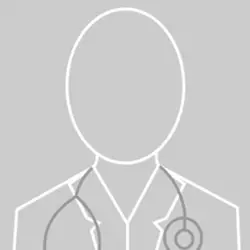Myocardiopathies
"Following its introduction into clinical practice, cardiac magnetic resonance imaging has become the best non-invasive diagnostic technique available for the diagnosis of acute myocarditis".
DR. JUAN JOSÉ GAVIRA GÓMEZ
SPECIALIST. CARDIOLOGY DEPARTMENT

Cardiomyopathies are a group of diseases that affect the heart muscle itself.
This affectation is primary and is not due to any alteration of the valves or the coronary arteries.
Dilated Cardiomyopathy: This is the most common and is characterized by progressive dilation and loss of the myocardium's ability to contract.
This causes the clinical signs and symptoms of heart failure to appear: dyspnea (choking sensation), edema...
Hypertrophic cardiomyopathy: appears due to hypertrophy (excessive growth) of the ventricular muscle or of localized portions of it.
This hypertrophy conditions a deficient relaxation of the ventricle that, although it is capable of contracting strongly, it is not able to relax and therefore it fills up poorly, appearing the symptoms of a heart failure.
Restrictive cardiomyopathy: this is the most rare and infrequent. It is characterized by the deficient relaxation of the ventricle, which causes heart failure due to the impossibility of filling the ventricles.

What are the symptoms of cardiomyopathy?
The most common symptoms are:
- Dyspnea.
- Edemas.
Do you have any of these symptoms?
You may have cardiomyopathy
How is cardiomyopathy diagnosed?

The diagnosis of cardiomyopathies is established based on the symptoms found.
Two-dimensional echocardiography and Doppler are fundamental to confirm the diagnosis, as well as very useful to evaluate the degree of ventricular dilation and dysfunction and to exclude an associated valvular or pericardial pathology.
Magnetic resonance imaging (MRI) plays a fundamental role in the diagnosis and clinical management of cardiomyopathies. Its contribution is based on its capacity for tissue characterization in addition to the accurate and reproducible quantification of cardiac mass and volumes.
Through resonance, morphology can be assessed, the severity of ventricular dysfunction can be determined and myocardiumopathy can be characterized (etiological diagnosis).
How are cardiomyopathies treated?
Dilated Cardiomyopathy
The treatment consists of the administration of drugs usually used in heart failure and, in more advanced stages, the performance of a heart transplant.
Hypertrophic cardiomyopathy
Treatment will consist of the administration of drugs that decrease the contractility of the heart muscle, such as beta-blockers or calcium antagonists.
In some cases, pacemakers can be used to alleviate the symptoms and even, when the hypertrophy is localized, to provoke a heart attack in that area (percutaneous ablation of the septal artery).
Restrictive cardiomyopathy
The treatment will consist of the control of the symptoms produced by the heart failure.
Where do we treat them?
IN NAVARRA AND MADRID
The Department of Cardiology
of the Clínica Universidad de Navarra
The Department of Cardiology of the Clinica Universidad de Navarra is a center of reference in different diagnostic techniques and coronary treatments.
We have been the first center in Europe to place a pacemaker by means of a catheterization without the need to open the chest, for cases of severe heart failure.
The Cardiology Department of the Clinic collaborates with the Radiology and Cardiac Surgery Departments to achieve a quick and precise diagnosis of the patient.

Why at the Clinica?
- Specialized Arrhythmia Unit of national reference.
- Unit of Hemodynamics and Interventionist Cardiology equipped with the best technology.
- Cardiac Imaging Unit to achieve the highest diagnostic accuracy.

















